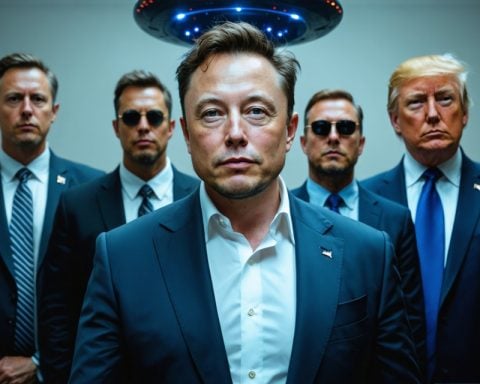The Future of Mobile Communication
Samsung has recently unveiled its highly anticipated Galaxy S25 series during a spectacular Galaxy Unpacked event. This new lineup showcases a significant technological advancement, as all models utilize the cutting-edge Snapdragon 8 Elite platform, promising enhanced performance globally.
In an exciting development, these smartphones are the first in the market to incorporate the Snapdragon Satellite feature. This innovative technology allows users to send and receive messages through satellite connections, seamlessly integrated within the Android operating system.
Verizon has stepped up to support this feature with its Satellite SOS messaging, powered by Skylo, which ensures that communication remains possible even in remote areas where traditional cellular service may be lacking. Recently, Verizon has expanded this capability, unlocking global satellite connectivity for an impressive range of devices.
The Skylo satellite network ensures coverage in challenging terrains, allowing users to stay connected regardless of their location. However, it is essential to note that for optimal performance, users need to be outdoors with a clear line of sight to the satellite, and there may be limitations in certain regions, such as parts of Alaska.
As the demand for connected devices continues to surge, we can anticipate that more mobile carriers will soon enable satellite services for the Galaxy S25 series, cementing its place as a game-changer in mobile technology.
Beyond Connectivity: The Wider Implications of Satellite Communication
The advent of satellite communication through smartphones like the Samsung Galaxy S25 series heralds a revolution in global connectivity. This technological leap has profound implications for society, culture, and even the global economy. As connectivity becomes ubiquitous, it empowers individuals in remote and underserved regions, enhancing access to information and resources that were previously out of reach. When people can communicate from remote locations, it fosters greater social inclusion and potentially bolsters economic opportunities, creating a more leveled playing field.
Moreover, the implications extend to emergency response and disaster management. Satellite SOS messaging could significantly improve response times and communication during crises, allowing first responders to coordinate efforts more effectively in areas with damaged or non-existent infrastructure. This feature could save lives in natural disasters where ground-based networks fail.
As satellite technology becomes increasingly integrated into everyday devices, we can expect a shift in business dynamics. Industries reliant on remote operations, such as agriculture, mining, or tourism, may see increased productivity and efficiency. Long-term, this could reshape the global economy, emphasizing a new era of always-on connectivity.
However, there are environmental considerations as well. The expanding satellite infrastructure contributes to space debris—a growing concern in the tech community. The balance between connectivity benefits and environmental stewardship will be crucial moving forward, necessitating rigorous standards for sustainable practices in satellite deployment.
As we look to the future, the trajectory of mobile communication technology suggests an increasingly interconnected world, where the implications of connectivity extend far beyond mere functionality, shaping the way we interact with each other and our environment.
The Game-Changing Galaxy S25: Innovations and Insights into Mobile Communication
The Future of Mobile Communication
Samsung’s recent launch of the Galaxy S25 series at the highly anticipated Galaxy Unpacked event has set a new standard in mobile technology. Leveraging the advanced Snapdragon 8 Elite platform, this flagship series promises remarkable performance enhancements for users around the globe.
Key Features and Innovations
1. Snapdragon Satellite Integration: The Galaxy S25 series is the first smartphone lineup to incorporate the cutting-edge Snapdragon Satellite technology. This feature allows users to send and receive text messages via satellite, ensuring connectivity even in remote areas. This development is impactful as it seamlessly integrates with the Android operating system.
2. Verizon’s Satellite SOS Messaging: Partnering with Skylo, Verizon supports the satellite messaging feature with its Satellite SOS messaging service. This offering ensures that users can maintain communication in locations devoid of traditional cellular coverage. Recently, Verizon expanded this capability significantly, providing global satellite connectivity to a wide array of devices.
3. Skylo’s Global Coverage: The Skylo network is designed to operate effectively in challenging terrains, reinforcing connectivity in tough conditions. While the service offers extensive coverage, users must be outdoors with a clear line of sight to satellites for optimal use. Certain regions, including parts of Alaska, might experience connectivity limitations.
Use Cases
The introduction of satellite messaging opens numerous use cases for diverse consumer segments, including:
– Outdoor Enthusiasts: Hikers, campers, and adventurers can now stay in touch with friends and family even in the most remote locations.
– Emergency Responders: The ability to communicate in disaster-hit areas, where traditional networks are compromised, provides an essential safety advantage.
– Travelers in Remote Regions: Tourists exploring areas with limited cellular service can remain connected, enhancing safety and accessibility during travels.
Pros and Cons
Pros:
– Unmatched Connectivity: Access to messaging where cellular networks fail.
– Robust Performance: Enhanced processing power with the Snapdragon 8 Elite platform.
Cons:
– Outdoor Requirement: Necessitates a clear line of sight for functionality.
– Regional Limitations: Connectivity may vary based on geographic location.
Pricing and Market Analysis
The pricing details for the Galaxy S25 series remain competitive within the flagship smartphone market. As mobile carriers increasingly adopt satellite services, the landscape for connectivity offers both opportunities and challenges for carriers and users alike.
Predictions and Trends
Looking forward, the integration of satellite technology into mobile phones is poised to trend upward, reflecting the growing consumer demand for reliable communication solutions. Analysts predict that by 2025, a significant number of smartphone manufacturers will incorporate similar satellite capabilities, broadening the market for both consumers and businesses.
Security and Sustainability Considerations
As with any new technology, security remains a critical aspect to consider. Implementing robust encryption protocols for satellite messaging is essential to safeguard user data while using these advanced communication systems. Furthermore, the sustainability of satellite technology operations will come into focus as the space industry evolves.
For those interested in exploring further innovations in mobile communication, you can visit Samsung for the latest updates and product releases.


















